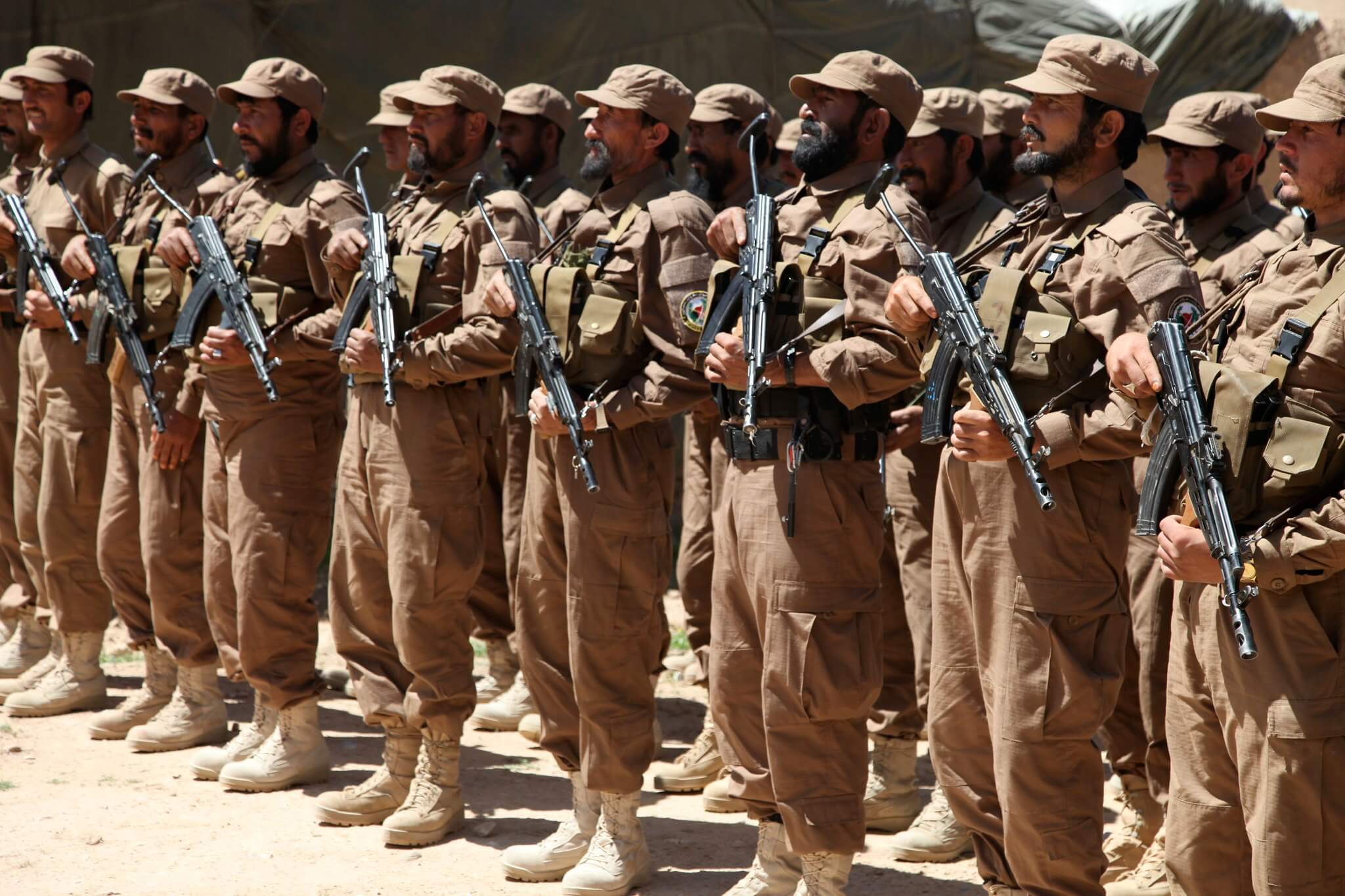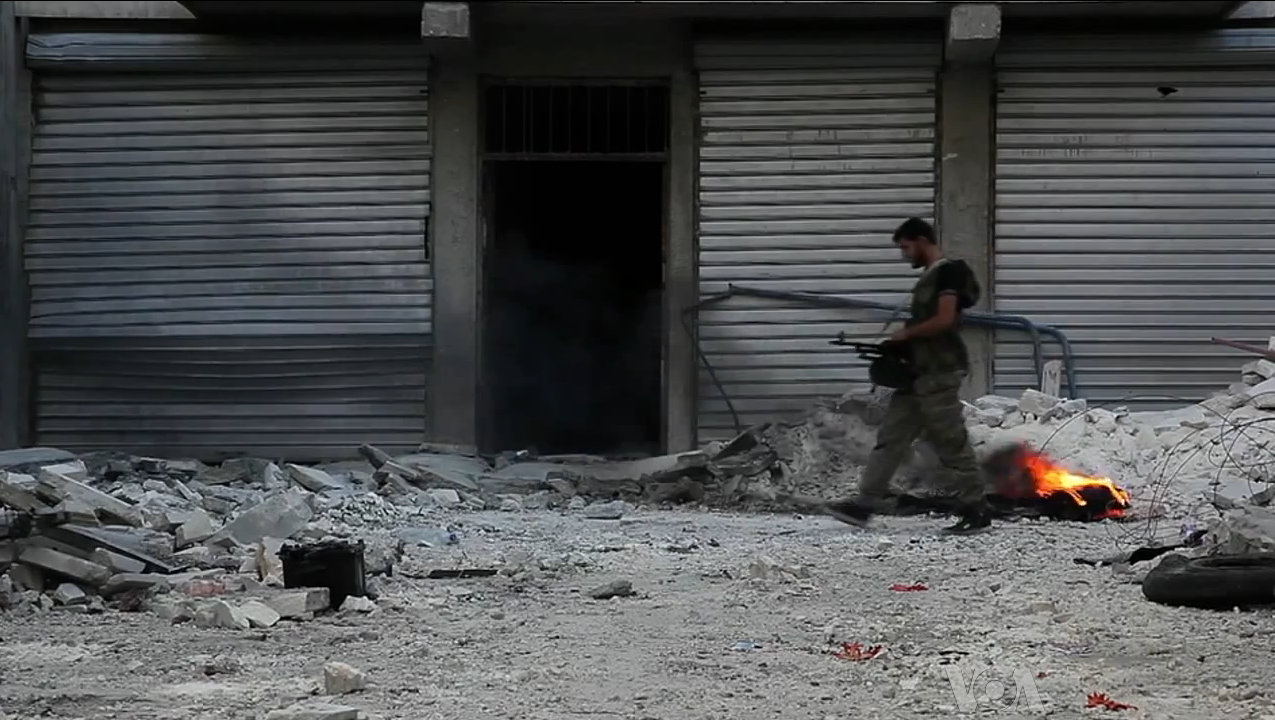The Truth Shall (Maybe) Set You Free
_-_flickr_-_the_central_intelligence_agency_(2).jpeg?sfvrsn=c1fa09a8_7)
Published by The Lawfare Institute
in Cooperation With

Enter the CIA’s Old Headquarters Building lobby, and you will find inscribed a quote from John 8:32, “And Ye Shall Know the Truth and the Truth Shall Make You Free.” It is a prophetic banner for an organization charged with understanding and, at times, shaping world events. It also appears to be Tim Weiner’s aspiration in “The Mission,” which chronicles the agency’s work in the first quarter of the current century. Weiner’s deeply researched account—replete with firsthand interviews of agency veterans—certainly gets us closer to knowing the truth. But when so much has been written on the agency’s exploits and excesses, it is less clear that “The Mission” will be what sets us free.
Those familiar with Weiner’s earlier books will find he adopts a different tone in “The Mission.” Weiner’s previous history of the CIA, “Legacy of Ashes,” which won the 2007 National Book Award for nonfiction, was highly (and controversially) antagonistic toward the agency. As its title suggested, it argued that the agency had harmed U.S. national security interests as frequently as it advanced them during the Cold War. Weiner has dialed down his stridency in “The Mission” and produced a more readable and credible narrative as a result.
“The Mission” also benefits from Weiner’s impressive access to former agency officials. Weiner acknowledges as much with pride, declaring that “[r]ecruiting agents overseas was not unlike developing sources at the CIA.” Weiner proves himself to have been an adept handler, drawing on material from officials including former CIA Director William Burns in his final chapters. This access to senior agency personnel may be Weiner’s comparative advantage over other accounts of the CIA’s activities over the past quarter century, even impressive ones such as “Way of the Knife.”
The Global War on Terror
The first half of “The Mission” addresses the global war on terror. What emerges is an organizational equivalent of a hero’s journey from obscurity to glory. Weiner describes the pre-9/11 CIA as listless and prone to missteps and setbacks. But by the time of the raid on Osama bin Laden’s hideout in May 2011, the agency stood at the zenith of a multipronged U.S. counterterrorism war that stretched from Yemen to Iraq to South Asia. Weiner chronicles this era primarily through official reports, news articles, memoirs, and interviews conducted by the oral history program at the University of Virginia’s Miller Center. These sources offer considerable evidence not only about the actions but also about the thoughts and reflections of CIA officers, diplomats, soldiers, and policymakers.
9/11, al-Qaeda, Afghanistan
Weiner’s first chapters portray the CIA as adrift in the 1990s. Weiner describes the clandestine service as “barely a thousand strong” and an analytic cadre marred by “despair” at the “rudderless drift of American foreign policy” following the end of the Cold War. The agency itself was on thin political ice, Weiner asserts, after a series of botched counternarcotics operations, ill-conceived attempts at regime change, and fatal targeting errors.
Al-Qaeda emerged as a nascent threat during the second half of the 1990s, and like many others, Weiner faults George W. Bush and his senior national security staff for failing to take the threat seriously. He describes then-Director of Central Intelligence George Tenet’s valiant but ineffective effort to secure more resources and attention from then-National Security Adviser Condoleezza Rice, who did not “have much faith in Tenet” or “grasp his sense of urgency.” Even President Bush, Weiner writes, “shrugged [...] off” the President’s Daily Brief article from Aug. 6, 2001, titled “Bin Laden Determined to Strike in US.”
Weiner portrays the CIA’s role in Afghanistan following 9/11 largely through the lens of the Counterterrorist Center (CTC) leadership and agency field commanders. This cadre, including Cofer Black, Hank Crumpton, and Greg Vogle, put the CIA on a war footing, helped orchestrate the Taliban’s overthrow, and led a frenzied search for Osama bin Laden. Weiner’s writing style resembles the CIA’s own militaristic shift as he describes a “battalion of case officers” and “squadrons of CIA retirees and military veterans” thrown into the increasingly global fight against al-Qaeda. Weiner accurately pays homage to the CIA’s insertion of the first team into Afghanistan a mere 15 days after 9/11. But the macho account in “The Mission” overlooks the contributions of the (heavily female) analytic unit, Alec Station, that tracked bin Laden ahead of the attacks.
“The Mission” breezes through the bulk of the Afghanistan conflict, mainly highlighting the wartime exploits of various CIA officers atop an unstable political foundation. Afghanistan, as Weiner notes, “was a CIA country” because of the dependencies created by agency money. The CIA matched this investment in treasure with one in blood, and “The Mission” lays out the agency’s human toll in farflung places such as Shkin and Khost. Afghan actors receive far less coverage, except for President Hamid Karzai, whom Weiner describes as “tragic hero corrupted by power.” Weiner returns to Afghanistan near the end of “The Mission” to recount the chaotic withdrawal.
Iraq
Weiner’s account of the CIA’s role in Iraq generally fits with other accounts of the war. Weiner too views the choice for war as flowing from a tragic combination of political pressure from senior Bush administration officials and fundamentally flawed intelligence.
At this point, “The Mission” temporarily shifts its narrative out of the CIA trenches and over to the White House in order to show the administration’s appetite for Iraqi regime change. In general, Weiner relies on established secondhand sources, such as Robert Draper’s “To Start a War,” to sketch the central personalities. Even before 9/11, Weiner underscores, Vice President Dick Cheney and Deputy Secretary of Defense Paul Wolfowitz were eager to see the CIA embark on dubious covert operations to topple Saddam Hussein based on the dubious promises of Ahmed Chalabi and the Iraqi National Congress. Once al-Qaeda struck on 9/11, the stage was set for neoconservatives to press their case, and Weiner conveys this sense of inevitability in “The Mission.”
Still, no account of the Iraq War would be complete without taking stock of the Intelligence Community’s serious shortcomings. Weiner demonstrates that “what the CIA didn’t know about Iraq’s weapons far exceeded what it did.” At the tactical level, a rushed National Intelligence Estimate proved wrong in its critical high confidence judgments about Iraq’s expanding weapon stockpiles. At the more strategic level, Weiner correctly notes that the “CIA didn’t understand until years later that Saddam wanted to deceive” world powers into thinking his arsenal was still operational. As debriefings, tapes, and archives now bear out—Saddam, who greatly overestimated the agency’s capabilities, figured the CIA could see through the mirage.
Weiner punctuates his Iraq War coverage with interesting anecdotes of CIA officers undertaking bold operations and the agency’s fruitful partnership with the military to dismantle al-Qaeda in Iraq. These modern derring-do stories give “The Mission” its edge, just as Cold War-era ones did in “Legacy of Ashes.” Consistent across the timelines is a concern that the agency’s focus on paramilitary operations came at the expense of its mission of collecting significant human intelligence.
The Rendition, Detention, and Interrogation Program
Weiner also delves into the CIA’s troubled rendition, detention, and interrogation effort. The CIA’s infamous “black sites” have long been subjects of congressional scrutiny, media coverage, and Hollywood imagination. Weiner unpacks the program’s brutality, but is more sphinx-like on its political and intelligence legacy.
Weiner’s descriptions can be visceral. In Thailand, Abu Zubayda “choked, gagged, vomited, howled, and writhed.” In Afghanistan—at the notorious Salt Pit—men were “strung [] up in chains” and subject to “mock executions and beatings by black-clad masked guards.” In Poland, an interrogator used a “medieval technique” on an al-Qaeda operative involved in bombing the USS Cole. Weiner also identifies bureaucrats at various levels who helped enable the abuses, from Justice Department lawyers such as John Yoo in Washington (he made torture “an institution” of the U.S. government) down to CIA officer Matthew Zirbel in Afghanistan (who “was living proof that the CIA had no business running prisons”).
It is harder to divine how agency officers grappled with these abuses. Weiner writes that “[s]ome CIA officers who witnessed the interrogations firsthand were sickened by their ferocity.” Others he quotes were more clinical than contrite, including one officer who observed, “[t]he waterboard was not the silver bullet .... Sleep deprivation was.” Some senior officers clearly recognized the agency was barreling toward a political and operational disaster, based on their hurried effort to destroy tapes of the Thailand-based interrogations.
Still, “The Mission” offers scant evidence of the CIA’s institutional remorse or reform. Weiner’s main offerings come from post-hoc secondhand sources such as Michael Hayden’s memoir and Gina Haspel’s letter to the Senate Intelligence Committee before her confirmation as director. It is widely reported, including in “The Mission,” that Haspel was one of the main characters in the tape destruction scandal.
Emerging Challenges
The second half of “The Mission” turns to the CIA’s more recent challenges—from the early 2010s to the start of the second Trump administration. Weiner identifies the agency’s counterproliferation work as a bright spot, while faulting its inability to foresee the Arab Spring. The book’s final chapters sketch looming perils for the CIA as it pivots back to its espionage roots and navigates successive Trump presidencies.
Fiercer Adversaries, Aging Tools, Strong Relationships
“The Mission” shows how the CIA was winning the counterterrorism fight, but losing elsewhere. Weiner portrays the Chinese Ministry of State Security (MSS) as particularly effective in humbling the agency. “The Mission” first shows the MSS’s resurgence in recounting U.S. counterintelligence failures that helped Beijing destroy the agency’s human intelligence network in China in the early 2010s. Then, in 2014, the MSS hacked the U.S. government’s human resources repository and landed what Weiner calls a “devastating blow” against the CIA for having uncovered sensitive information about security clearance holders.
“The Mission” reflects on whether technological advances have turned clandestinity—the bread and butter of human intelligence—into a fading memory. As Weiner writes, gone are “the days when a fake passport and a cover story were all a spy needed to get by.” The thrust, as longtime agency watchers wonder, is how the CIA will adapt to an age marked by ubiquitous technical surveillance and artificial intelligence. Weiner posits that an agency reorganization in 2015, which included the creation of a directorate focused on enhancing CIA’s digital and cyber capabilities, has helped the CIA prepare for this landscape.
The CIA’s foreign intelligence relationships also emerge as a strong force multiplier in “The Mission.” Nowhere is this clearer than in Burns’s directorship and, under him, the agency’s liaison in Ukraine. Weiner writes that the Biden administration’s intelligence-sharing campaign ahead of Russia’s February 2022 invasion “paved a two-way street with foreign services” that improved trust and cooperation. And, after the invasion occurred, the CIA helped “Ukraine create a twenty-first-century spy service.” The takeaway is that robust intelligence diplomacy has extended the CIA’s reach in spying on America’s hard-target adversaries.
The Man in the White House
President Trump looms large in “The Mission,” which covers his tumultuous relationship with the CIA. This history starts with the intelligence community’s conclusions regarding Russia’s pro-Trump election interference in the 2016 presidential election and runs to the second Trump administration’s early 2025 effort to purge newly hired CIA officers.
Weiner’s view of the president is clear. In the prologue, he describes Trump as “an authoritarian” who presents the greatest “danger to the national security of the United States since this century began.”
The CIA’s ability to weather the storm under the second Trump administration remains to be seen. Weiner is deeply worried about an unconstrained president who could order the agency to “spy on Americans,” “conduct political assassinations,” or even “start a war in secret.” “The Mission” captures a “foreboding” and “sense of impending calamity” as Director John Ratcliffe and Elon Musk impose Trump’s will on the agency. A longer-term impact may be the CIA’s diminished ability to recruit sources because of the Trump administration’s willingness to turn its back on U.S. allies.
Conclusion
Weiner has produced a broad account of the CIA that will entertain readers with page-turning exploits of espionage. “The Mission” shines when it focuses specifically on operations, in part because of the individuals who offered themselves up as sources. The colorful cast of mostly Directorate of Operations officers demands an equally colorful writer; Weiner fits the bill.
“The Mission” also valiantly tries to contextualize the CIA within two decades of American foreign policymaking. It is not immediately clear, though, whether Weiner has unearthed anything new about America’s arc during the global war on terror. Many of the episodes involving Presidents Bush and Obama have been more deeply reported elsewhere. There is more freshness in the book’s coverage of America’s recent reembrace of great power competition, and more resonance in Weiner’s present-day warnings about Trump’s authoritarianism.
Weiner occasionally gets too excited with his subjects. In striving to offer a sober history of the agency, “The Mission” delves deep into the CIA bureaucratic weeds. Readers will emerge as experts on Langley’s internal politics or learn to tune out the barrage of names and titles. Weiner’s vivid writing can also blur the lines between reporting and commentary, and he could have been more careful in some of his attributions. For example, one still-serving senior officer was forced into retirement after statements from him, which originated in a different context, appeared in pre-launch excerpts of “The Mission” that were critical of the Trump administration.
If nothing else, “The Mission” represents a remarkable shift in Weiner’s appraisal of the CIA. It is ironic that “Legacy of Ashes” was all about the agency’s cartoonish ineffectiveness during the Cold War. What Weiner assailed the agency for not being—that is, “a first-rate spy service”—now appears to be the very thing he fears that President Trump will employ the CIA to be, but with American citizens rather than foreign adversaries as its targets. This fateful warning is the culmination of Weiner’s attempt to inform and persuade. He juggles both tasks well in “The Mission.”




.jpg?sfvrsn=118b03e5_5)
